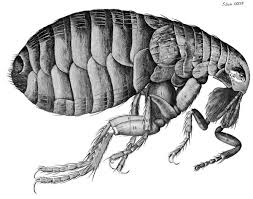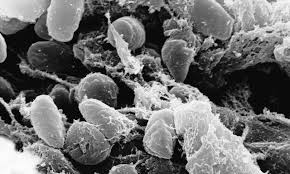
The Black Death: A Detailed Analysis
By: Christopher Piechocki 4/21/2015
•The bubonic plague (aka: The Black Death) took many lives. Towards the end of 1352, the European population had risen to roughly 50 million. After the effects of this deadly outbreak, the population of Europe had dropped to less than 25 million, thus killing half of the population. Although most people relate the Black Plague to the European Middle Ages, this deadly disease still continues to destroy many lives today. For example, roughly 2,000 cases of the plague are reported each year to the World Health Organization from all corners of the globe. In 2013 alone, there were 126 reported deaths as a result of this destructive illness.
•The bubonic plague is a disease that affects all kinds of animals, including humans. It is caused by a strain of bacteria known as yersinia pestis. There are numerous ways to contract this disease; however, the most widely known method of transmission is through either fleas or rodents that carry this bacteria. Simply put, if a rodent carrying the infecting bacteria is bitten by a flea, that flea is now infected and can spread the disease discreetly from human to human through biting. In the early 1330’s an outbreak of the bubonic plague occurred in Central Asia. During the Middle Ages, Central Asia was the site of one of the world’s largest international trade routes. Due to the amount of product leaving this region, this plague spread rapidly to all of Europe and northern Africa.

•Patients who contract the bubonic plague do so through either flea or rodent bites and eventually develop a number of symptoms. For example, fever, headache, chills, and weakness are some of the less severe flu-like symptoms associated with this form of plague.
•The most severe symptom is the presence of swollen lymph nodes (called buboes, hence the plague’s name), which can be extremely tender and painful to the touch. These buboes tend to appear in either the inguinal, axillary, or cervical regions of the body, where lymph node clusters are most present.
•The incubation period for the yersinia pestis bacteria ranges from 3 to 7 days. This disease can also cause blemishes on the skin that are red at first and can eventually turn to black.

•Lymphatic •Respiratory •Immune •Muscular •Integumentary
Along with bubonic, yersinia pestis can affect the body in two other ways such as septicemic or pneumonic. If left untreated, either form of the plague can result in death.
•Septicemic: This form of plague is contracted by touching contaminated fluid or tissue, and occurs when the bacteria multiplies in the bloodstream. Symptoms include fever, chills, weakness, abdominal pain, shock, and bleeding underneath the skin or organs. However, buboes do not develop.
•Pneumonic: This is the most serious form of plague and occurs when the yersinia pestis bacteria infects the lungs and causes pneumonia. Pneumonic plague occurs when one inhales airborne droplets of plague bacteria from an infected person or animal. Symptoms of shortness of breath, chest pain, cough, and sometimes bloody or watery sputum develop within 1 to 3 days after infection.
To say that people didn’t know much about the Black Plague during its outbreak would be an understatement. The physicians working on the patients knew about as much about the plague as the patients themselves. Desperate times called for desperate measures, and as the bodies began piling up, the methods of treatment became more and more drastic. For example, accounts of coating patients in mercury and baking them in the oven and frequent bloodletting sessions were meant to rid the body of invading pathogens.


The plague is an extremely serious illness. According to the World Health Organization, the earlier a patient receives medical attention, the better chance of survival he or she has. Even though the plague had killed roughly 25 million people during the 14th century, the introduction of different vaccines and antibiotics for this disease has drastically lowered its mortality rate. Drugs such as streptomycin and gentamicin have been known to yield the best results for a patient’s full recovery.
To reduce the risk of infection one should take special precautions. One should do their best to make their home and work-space free of rodents by removing clutter, properly disposing of food, and keeping surrounding areas clean. Also, one should always wear gloves when handling or skinning infected animals. In addition to properly handling potentially infected animals, one should also apply insect repellent when working outdoors or participating in outdoor recreational activities to reduce the risk of flea bites.
During the Middle Ages, the doctors of the black plague (pictured on the left) wore garments made of wax coated canvas to protect themselves against infection. Along with their grim looking cloaks, the doctors wore grotesque masks that resembled a bird’s face. However, this hideous mask actually served a purpose. The beak was designed to contain fragrant compounds to keep the plagued air at bay. Yet, regrettably, these protective garments did not protect all of the wearers from infection. Many of the plague doctors eventually ended up dying due to exposure.

The effects of the bubonic, septicemic, and pneumonic plagues are still not fully understood by doctors. The National Institute of Allergy and Infectious Diseases (NIAID) is currently working alongside a number of departments to identify specifically how this bacteria functions within the human body. Even though there is a plethora of antibiotics to treat this disease, there is currently no commercially available vaccine within the United States. In response to this, the NIAID is currently researching a preventative vaccine for the plague infection. Surprisingly, as opposed to focusing all research towards the prevention of this disease, others are forced to take their research down a darker path. There have been numerous accounts of this bacteria being used as biological weaponry. Throughout history, there have been accounts of individuals both launching infected bodies into urban, uninfected areas and dropping infected fleas over cities and towns via airplanes so as to wipe out numerous civilizations. So in turn, the NIAID is also researching methods of preventing bioterrorist attacks with emergency vaccines.
